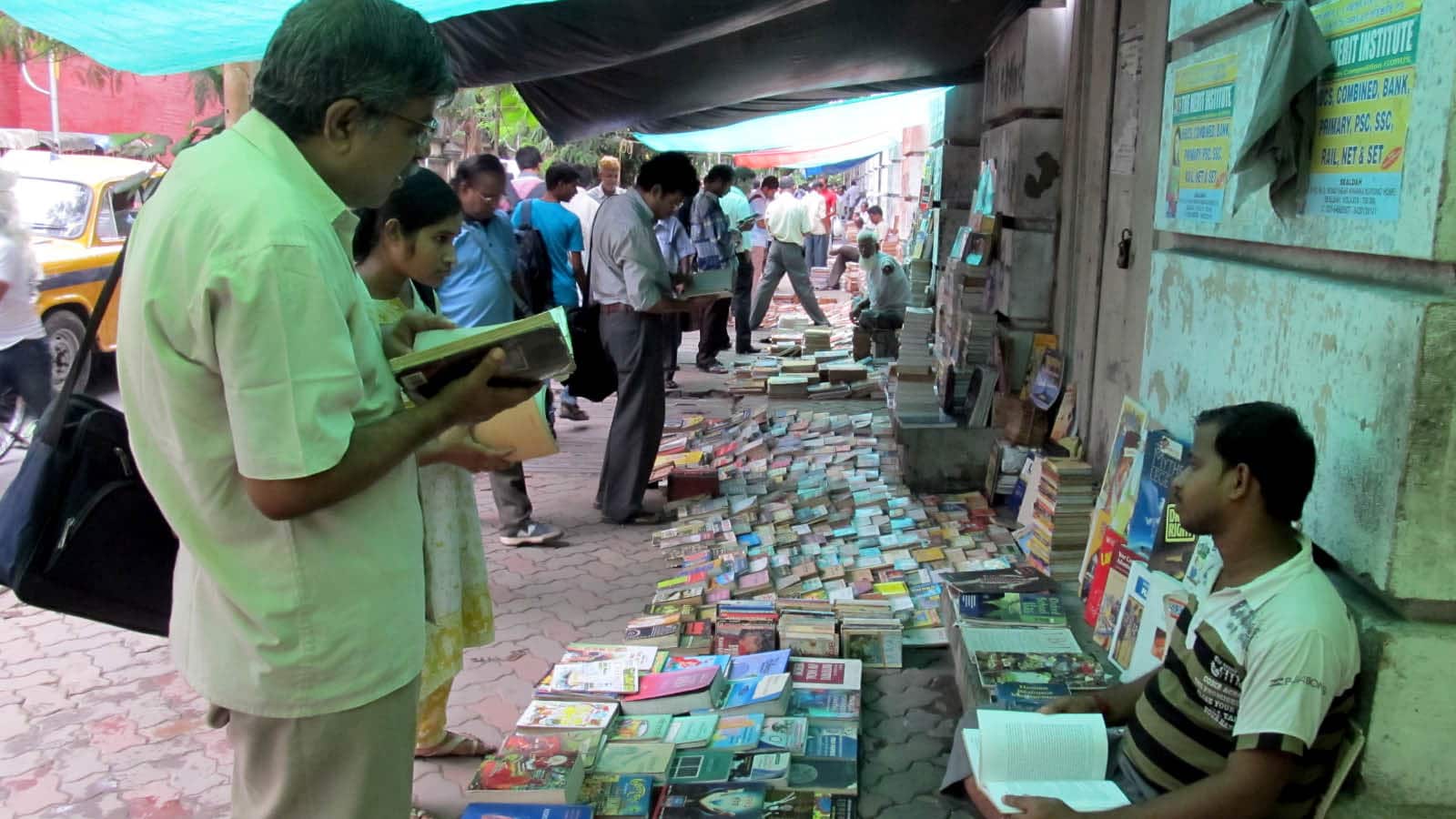On landing in Kolkata from the United States in 2011, the first thing author Jhumpa Lahiri did was to visit “Boi Para” and Coffee House in the City of Joy.
Boi Para, Kolkata’s historic College Street, is the world’s biggest and oldest second hand book mart functioning since 1850. It attracts not only NRI’s like Lahiri, Vikram Seth and the Nobel Laureate Amartya Sen, but foreigner writers too, such as William Dalrymple, Dominique Lapierre, Larry Collins and Guntur Grass.
A socio-cultural, political, revolutionary and intellectual hub of the Bengal since 1820, Boi Para saw Rabindranath Tagore leading anti-British processions against the Partition of Bengal in 1905 and Netaji Subhash Chandra Bose sitting in Table No. 4 at Favourite Cabin, listening to the revolutionary poems of famous Bengali poet Kazi Nazrul Islam.
College Street, Presidency College, Coffee House and Favourite Cabin, a “Chai” shop born in 1918, are favorite haunts of Bengali NRIs. Famous for its filmy “Adda” (gossip), Coffee House regularly attracted Satyajit Ray, Mrinal Sen, Manna Dey, Ashok Kumar, Kishore Kumar, Tapan Sinha, Ritwik Ghatak and Aparna Sen. Prithvi Raj, Raj, Shammi and Sashi Kapoors would invariably come to Coffee House whenever they were in Kolkata.
TALE OF A TABLE
Table No. 4 of Favourite Cabin is integrally associated with Bengal’s “Agni Yug” (age of fire), Swadeshi Movement and intellectual upheaval of armed resistance against the British by Anushilon and Jugantar parties. A glimpse of that era was caught in Bollywood’s Sahib Biwi Aur Ghulam, when Bhoothnath (Guru Dutt) curiously watches a few Swadeshis throw a bomb at the British. Satyajit Ray’s Bengali film Ghara Baire also vividly portrayed that Zamindari era.
When Bengal was politically burning, Boi Para, Coffee House and Favourite Cabin were hubs of intellectual revolutions. At table No. 4 in Favourite Cabin, a student of Presidency College, Subhash Chandra Bose, would sit to sip a cup of garam chai for 2 paise. Thrillingly, the plot of looting the armory at the British arsenal at Chittagong (now in Bangladesh) in 1930 by Surya Sen was woven there.
NOOK OF BOOKS
College Street is a strange bookish Xanadu of books, books and books! Books are everywhere in hundreds of open air stalls on both sides of the road, on the pavements, some in bamboo-thatched kiosks and others on wooden tables. Some book sellers trace their family history of “Boi Bikri” or book-selling to 1880.
Boi Para professes to have all the titles available in West Bengal. It stretches 1.5 km from Ganesh Chandra Avenue to Mahatma Gandhi Road.
It is said that wherever on earth when 10-Bengali Baboos meet, two things surely happen: Kali Bari and “Dola-doli,” i.e. they construct a Kali Temple and indulge in intellectual debate — Dola-Doli in Bengali dialect. Always argumentative, if a Bengali does not agree to disagree on intellectual matters, he is not a Bengali at all.
New York, New Delhi, London, Lucknow, Montreal, Mumbai, Stuttgart or Shimla, wherever they went, they constructed a Kali Bari. Following this tradition, 310-years ago, Baboo Shankar Ghosh, a Zamindar, constructed Thanthania Kalibari when he came to what is now known as College Street. That was 54-years before the Battle of Plassey and Robert Clive had not come to Calcutta to hatch midnight intrigues with Mir Zafar, Jagat Seth, and Omi Chand to oust the Nawab of Bengal Shiraj-ud-Doullah.
Calcutta comprised of three marshy villages, Gonvindapur, Suttanutti and Kolkata, helplessly nestling amidst thick jungles where worshippers of Goddess Kali and Tantriks indulged in “Noro Boli” or human sacrifice to appease the Goddess of Destruction: Maa Kali.
Thanthania Kalibari attracts Bengalis from all over the world. It is customary for Bengali NRIs to come here with their first born to perform “Puja.”
KOLKATA’S CULTURAL CORNER
Academic institutions, mushrooming at Boi Para since 1788, made it Bengal’s hub of socio-cultural transformation and a haven for Bhodrolok, who wanted their sons to be trained in English education rather than send them to “Sanskrit Tolls” (Sanskrit schools in villages) or Persian Madrasas.
Calcutta started expanding very rapidly after 1768. In 1774, the Supreme Court of East India Company became functional. Baboos, eager to have their sons as “Ukil” (lawyer) for the interest of their own Zamindaries, sent them to Kolkata to learn law.
By 1807, Boi Para boasted a large number of educational institutions and 10-years later Calcutta’s first planned road, the Great Arterial Road or Central Road, came into being. This is today’s College Street. By 1824, Baboos emerged as a cultured-intellectual-class separated from Bengal’s common peasantry.
The construction of Albert Hall in 1876, formation of the Hindu College (now Presidency College) and subsequent birth of the Coffee House, followed by the Favourite Cabin, sparked Boi Para’s intellectual atmosphere.
Not all come to Boi Para to buy second hand books, however. Its “Khawa,” or food is equally enticing.
Sweets are everywhere: Sandesh, Darbesh, Rosogolla, Kalo Jam, Lady Canny, Rosh Malai, Mishti Doi and Cham Cham — “Mishti” (sweet) galore. So are dishes like Kosha Mangsho, Kobiraji Cutlet, Keema-Kaleji, Mutton Chop and fish cutlet, especially Vetki fish.
A feast for the eyes, tongue, smell .… all the senses.
Photos: Abhishek Home Chowdhury


You must be logged in to post a comment Login